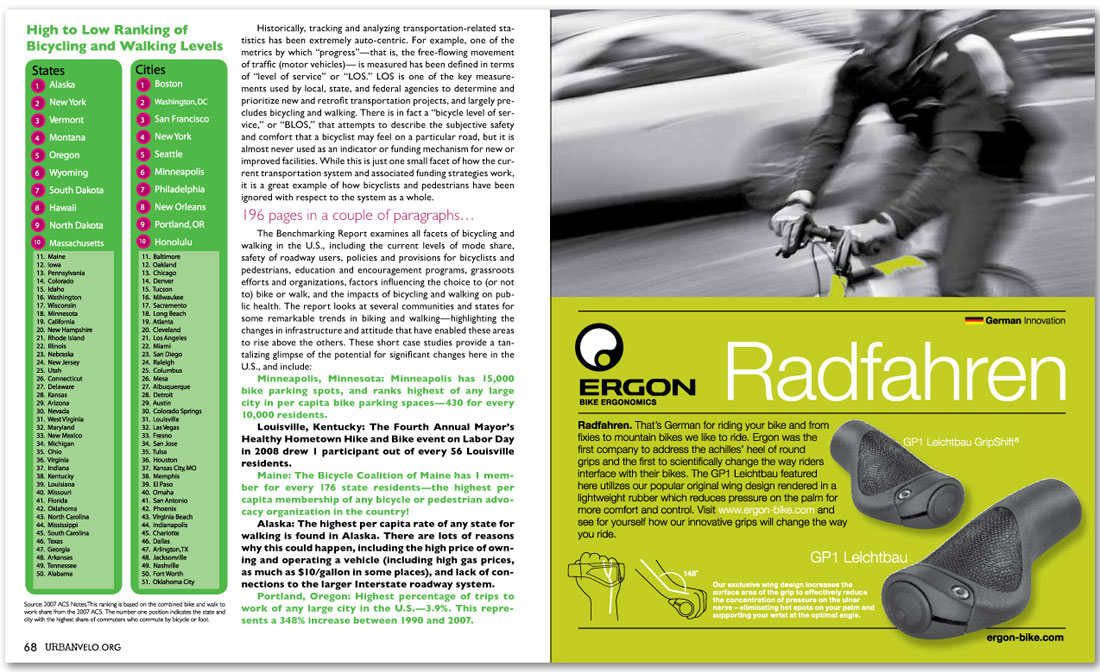


Historically, tracking and analyzing transportation-related statistics has been extremely auto-centric. For example, one of the metrics by which “progress”—that is, the free-flowing movement of traffic (motor vehicles)— is measured has been defined in terms of “level of service” or “LOS.” LOS is one of the key measurements used by local, state, and federal agencies to determine and prioritize new and retrofit transportation projects, and largely precludes bicycling and walking. There is in fact a “bicycle level of service,” or “BLOS,” that attempts to describe the subjective safety and comfort that a bicyclist may feel on a particular road, but it is almost never used as an indicator or funding mechanism for new or improved facilities. While this is just one small facet of how the current transportation system and associated funding strategies work, it is a great example of how bicyclists and pedestrians have been ignored with respect to the system as a whole.
196 pages in a couple of paragraphs…
The Benchmarking Report examines all facets of bicycling and walking in the U.S., including the current levels of mode share, safety of roadway users, policies and provisions for bicyclists and pedestrians, education and encouragement programs, grassroots efforts and organizations, factors influencing the choice to (or not to) bike or walk, and the impacts of bicycling and walking on public health. The report looks at several communities and states for some remarkable trends in biking and walking—highlighting the changes in infrastructure and attitude that have enabled these areas to rise above the others. These short case studies provide a tantalizing glimpse of the potential for significant changes here in the U.S., and include:
Minneapolis, Minnesota: Minneapolis has 15,000 bike parking spots, and ranks highest of any large city in per capita bike parking spaces—430 for every 10,000 residents.
Louisville, Kentucky: The Fourth Annual Mayor’s Healthy Hometown Hike and Bike event on Labor Day in 2008 drew 1 participant out of every 56 Louisville residents.
Maine: The Bicycle Coalition of Maine has 1 member for every 176 state residents—the highest per capita membership of any bicycle or pedestrian advocacy organization in the country!
Alaska: The highest per capita rate of any state for walking is found in Alaska. There are lots of reasons why this could happen, including the high price of owning and operating a vehicle (including high gas prices, as much as $10/gallon in some places), and lack of connections to the larger Interstate roadway system.
Portland, Oregon: Highest percentage of trips to work of any large city in the U.S.—3.9%. This represents a 348% increase between 1990 and 2007.